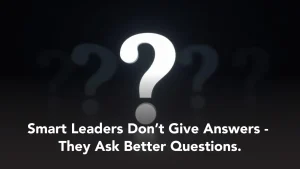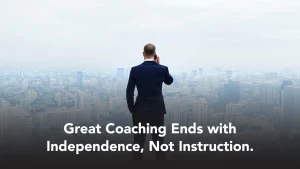
It’s not that hard, but there are many key steps and tips to create great presentations. Write a clear key message. Set your intentions. Carefully consider your conclusion, what you want your audience to remember as your main message. Develop the outline. Generate the content of your presentation, create your visuals, rehearse your opening and then edit and practice. Anyone from grade schoolers to a CEO can use these tips and steps to craft and deliver the perfect presentation.
1. Develop a Clear and Compelling Key Message
As a Presentation Skills consultant, I listen to many client presentations. I evaluate the content and delivery and make suggestions for improvement. One of my most frequent comments is this: What are you really trying to say? I’m not sure I’m getting it. The volume of data and information often fogs the real message.
An average person’s attention span is typically 7 minutes before the mind wanders off. During the 7 minutes, it is important to note that the mind will wander every 3-5 seconds. People go in, go out, go in and if the speaker isn’t engaging, they stay out. Listening and processing what we hear requires a lot of cognitive energy. Listening is hard — even harder if it’s later in the day, if other priorities are clouding your brain, if you’re hungry, have a backache, or need to use the washroom. Obstacles like a noisy room or not being able to clearly see the presenter can whittle those potential 7 minutes of attention down to 3.5 minutes.
Ask yourself, if someone surveyed the people who were in your presentation with the question, what was the speaker’s main message? Would you get an 80% consensus? If 80% of your audience can’t repeat it, then your key message wasn’t clear enough. So with that in mind, the speaker should develop a clear and succinct message. Repeat it more than once.
Help your audience hear your key message. You can preface your remarks by saying something like: I want you to take away an important key message and this is it…
2. Starting a Presentation with Memorable Opening Remarks
Knowing how to start a presentation effectively is crucial. You want your opening remarks to hook the audience and engage them immediately. You can do this in many ways: highlight their need to hear what you have to say; share a surprising statistic/number/dollar figure; deliver a short anecdote; tell a human interest story. These are just a few ideas for making your opening dynamic.
I often advise my clients to develop their opening remarks at the end of writing the presentation. These first moments are so important and they’re easier to write after everything else is finished.
Practice your opening remarks many times, out loud and standing up. You should be entirely fluent without reading or looking at notes. If your opening goes well, the rest of the presentation will follow in the same way.
3. Engage the Audience Through Storytelling
If your audience isn’t engaged, who are you talking to? They may look like they’re listening, but their minds could be on the golf course. Keep focusing on how to engage them. Make your delivery impactful, your slides simple and clean and your stories amusing or dramatic. Your eye contact and voice should reach out and bring them in.
Here are a few strategies that will help when you present: get them to ask or answer questions; praise them; reference current events; show strong visuals; talk about the competition; move; use a louder voice; and use humor carefully. Always be politically correct or you may disengage the audience.
4. Persuade Them with Forethought & Strategy
If your goal is to persuade your listeners to accept an idea, buy a product or service, or change their mind, focus on how to persuade them rather than the benefits of what you’re selling.
Here are some strategies that help the persuasion of your audience: think about them first and how you’ll address their needs; appeal to emotion; begin your presentation with their most pressing issues; sell solutions to their problems; describe what might happen if they don’t buy into your idea; be excited.
5. Deliver a Winning Presentation with Impact
How do we demonstrate as well as inspire confidence in our audience? We do it through strong body language. We all know that body language speaks louder than words. So to answer the question: how do I deliver a strong presentation? The answer must include a focus on body language. Think about using gestures that support your message. For example, a rounded gesture will support an empathetic message, a slicing gesture with a sentence ending in a lower tone is great when you want to make a point.
Body language is a very important aspect of delivering your presentation, also called non-verbal communication and is comprised of five main elements: Voice, gesture, posture, eye contact, and distance. After that comes grooming, dress and hygiene, all of these elements are critically important to the success of the presentation. As in any interpersonal skills training, our goal is to communicate effectively with our verbal and non-verbal messages.
Think about using: a louder-than-average voice; speech that has lots of inflection; natural hand gestures and facial animation; posture that is grounded and purposeful whether standing still or moving; and meaningful eye contact. Ask your friends for honest feedback. Drive your body language to inspire confidence in your audience.
6. Conclude with Conviction
Plan your concluding remarks. Don’t wing it. Make your conclusion distinct from the body of your presentation by announcing, In conclusion… This alerts the listener to refocus. Likely you will repeat your key message at this time. If they didn’t get it before, they will catch it now.
Consider what you want the audience to do after your presentation. Ask them directly. Outline the next steps and attach a timeline. This lends some urgency to a persuasive presentation.
End with conviction. Avoid phrases that sound hesitant or tentative, such as:
I hope I… Unfortunately we’re out of time… Possibly… Maybe you learned something today…
Instead use strong, concluding phrases, such as:
Just imagine when… I know we can achieve… I’m confident that… Let’s focus on…
The answer to how to give a winning presentation is a long and complex one. The strategies I’ve shared will help you achieve success when standing in front of an audience. You’ll feel the incredible rush that comes when they are listening, nodding, and smiling. That’s one of the perks that come with a mastery of presentation skills.
Join us for our presentation skills training workshop and take your public speaking to the next level! Whether you’re a seasoned professional or just starting out, our workshop will equip you with the tools and techniques to deliver a winning presentation every time.
———————————————
Subscribe to our FREE monthly newsletter
Download your free Executive Presence Scorecard




